MSN
Unglamorous feature emerges as symbol of wealth in ritzy California

Wealthy homeowners in California are increasingly investing in personal fire hydrants to protect against the growing threat of wildfires.
The trend has led to the unlikely object emerging as a new status symbol in ritzy areas such as Malibu, with realtors even claiming they can help homes sell faster because they ‘mitigate fear’, the Wall Street Journal reported.
Personal hydrants are connected to municipal water systems or private tanks, and provide an immediate water source in the event of a fire.
Some homeowners choose to install such a device as an extra safety measure, whereas others have no choice because their property is located in a remote area.
The rise in demand for the feature reflects growing concerns around the frequency and severity of wildfire outbreaks.
In the 2000s, wildfires in the U.S. were four times larger, three times more frequent and significantly more widespread compared to the previous two decades, researchers at the University of Colorado, Boulder, found.
In California, nine of the 10 largest wildfires in the state’s history have occurred within the last decade, with fire speeds increasing by 400 percent.
As well as personal fire hydrants, many homeowners are investing in advanced sprinkler systems and fireproof roofing as well as removing flammable landscaping to help safeguard their properties.

Wealthy homeowners are increasingly investing in personal fire hydrants to protect against the growing threat of wildfires. A yellow fire hydrant can be seen to the right of the driveway in the listing for a $14.995 million house in Westlake Village, California
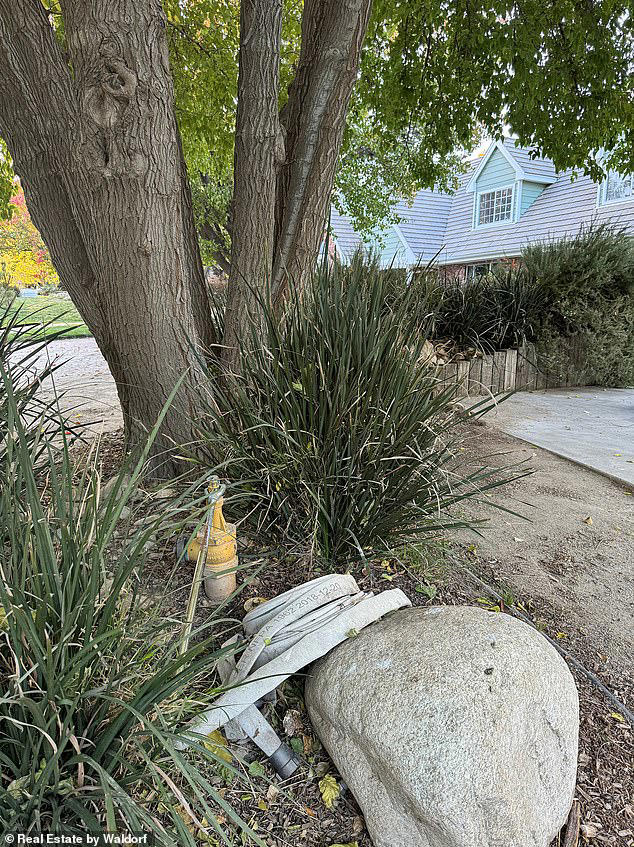
Some realtors even claim that mentioning personal fire hydrants in marketing materials could help homes sell faster
Developer Michael Owens has highlighted a yellow personal fire hydrant located on the driveway in a listing for a $14.995 million five-bedroom property called High Knoll Estate in Westlake Village, California.
He told the Journal: ‘I certainly didn’t try to hide it. It’s a selling point. It mitigates fear’.
The idea is that if there are not enough firefighters to protect entire areas in the event of a widespread disaster, fire hydrants can help homeowners protect their own properties and reduce the toll of destruction.
However, they are not cheap to install. The fire hydrant itself cost around $20,000 and there was an additional one-off $35,000 fee to the local water company and fire department to ensure it met regulations.
But that’s just the fire hydrant. The entire system—which includes permitting, design, a concrete foundation for the tank, and a retaining wall—can drive the cost into the six-figure range.
Victoria Waldorf, the listing agent for a five-bedroom, three-bathroom home spanning 4,691 square feet and priced at $1.775 million in Agua Dulce, California, said she also highlights the personal fire hydrant to every prospective buyer during showings.
‘There’s relief in people’s faces,’ she told the Journal.
Speaking to DailyMail.com, John McNicholas, a California-based real estate agent with Compass, said: ‘While it may seem overkill to pay for all of these fire defenses, when you own a property that is worth between $10 million and $50 million, it is a fraction of what it would cost to rebuild the home in the event of total loss.’
‘Because these properties are so valuable, it really becomes a form of wealth and asset protection,’ he added.
Fire hydrants are entirely legal but homeowners must comply with strict regulations set out by the National Fire Protection Association (NFPA) – from the size of the valves to how far from the water main they should be.
As well as potentially enhancing a property’s value and appeal to buyers, fire hydrants could also help lower insurance premiums.
However, in California, homes in high-risk wildfire areas often face challenges securing traditional insurance coverage.
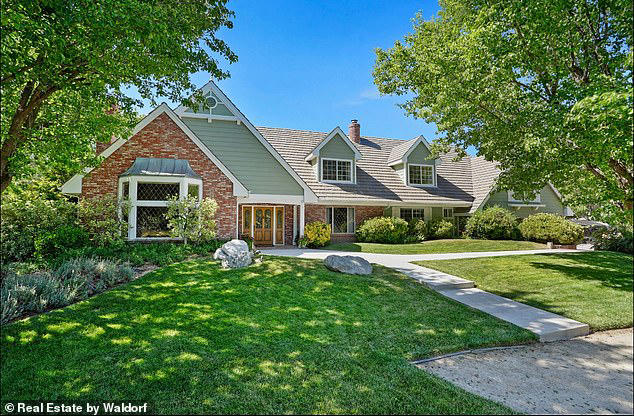
Installing a private hydrant is legal but expensive, costing up to $20,000 (Pictured: $1.775 million in Agua Dulce, California, listed with Victoria Waldorf)
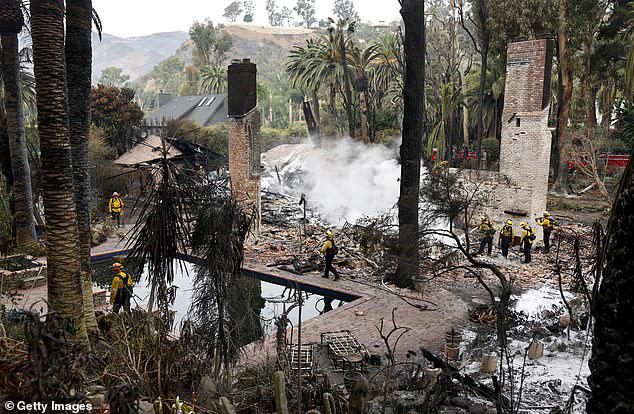
A private hydrant can enhance the property’s value and potentially lower insurance premiums.
Portable fire pumps, which draw water from sources such as swimming pools, are also gaining traction.
According to Arizton Advisory & Intelligence, the portable fire pump market is expected to grow by 3.76 percent a year between 2024 and 2032.
Meanwhile, the global fire-hose market is projected to grow by 6.85 percent annually from 2022 to 2028, with fire-nozzles in North America increasing by 5.68 percent.
McNicholas emphasized that private hydrants should be part of a broader fire defense strategy.
‘One of the most significant risks to homes during a fire is ember ignition,’ he explained. ‘Embers can easily slip under roof tiles or eaves, igniting the entire structure. Wildfire embers are particularly dangerous, and many fire prevention strategies focus on mitigating this threat.’
While installing a fire hydrant on your property can significantly aid firefighters in accessing water to defend your home, McNicholas said proactive measures such as using metal roofs, metal window frames and specialized fire sprinkler systems may offer more robust protection against ember ignition.
The other important aspect is landscaping.
‘Making sure that there is a large clearance between the home and any trees or shrubs is an important aspect of protecting the home as well, creating what is known as a defensible space barrier,’ McNicholas said.
‘I often advise my clients on these prevention methods when selecting properties that are located within a high fire zone.’
Meanwhile, Greg Anderson, Chief of Fire Engineering and Investigations for the California Department of Forestry and Fire Protection, emphasized that private hydrants should be accessible for fire department use.
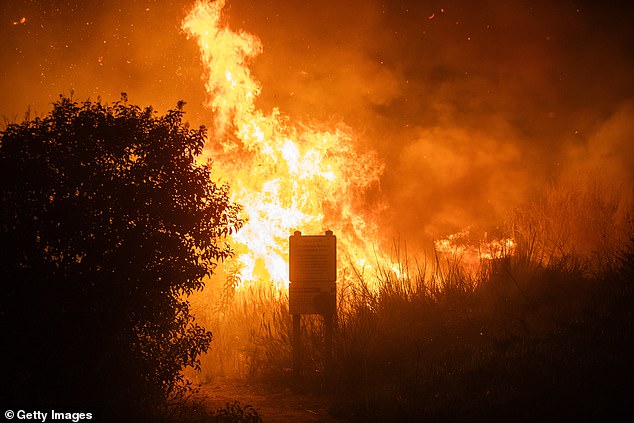
Pictured: The Franklin Fire burns next to powerlines at the Pacific Coast Highway in the morning on December 11, 2024 near Malibu, California
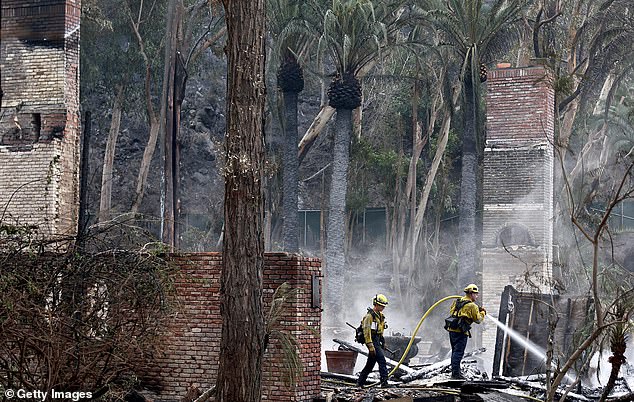
Proactive measures such as using metal roofs, metal window frames and specialized fire sprinkler systems may offer more robust protection against ember ignition
‘We do not recommend homeowners to stay behind and fight the fire,’ Anderson told the Wall Street Journal.
‘It is most important to save your life and evacuate when requested to do so. Homes and items can be replaced.’
Just this month mass evacuations were underway in Malibu, which is home to many celebrities, as a rapidly spreading wildfire wreaked havoc.
The fire, which ignited late on a Monday night, expanded to a staggering six square miles, with more than 15,000 firefighters deployed to combat the intense blaze.
